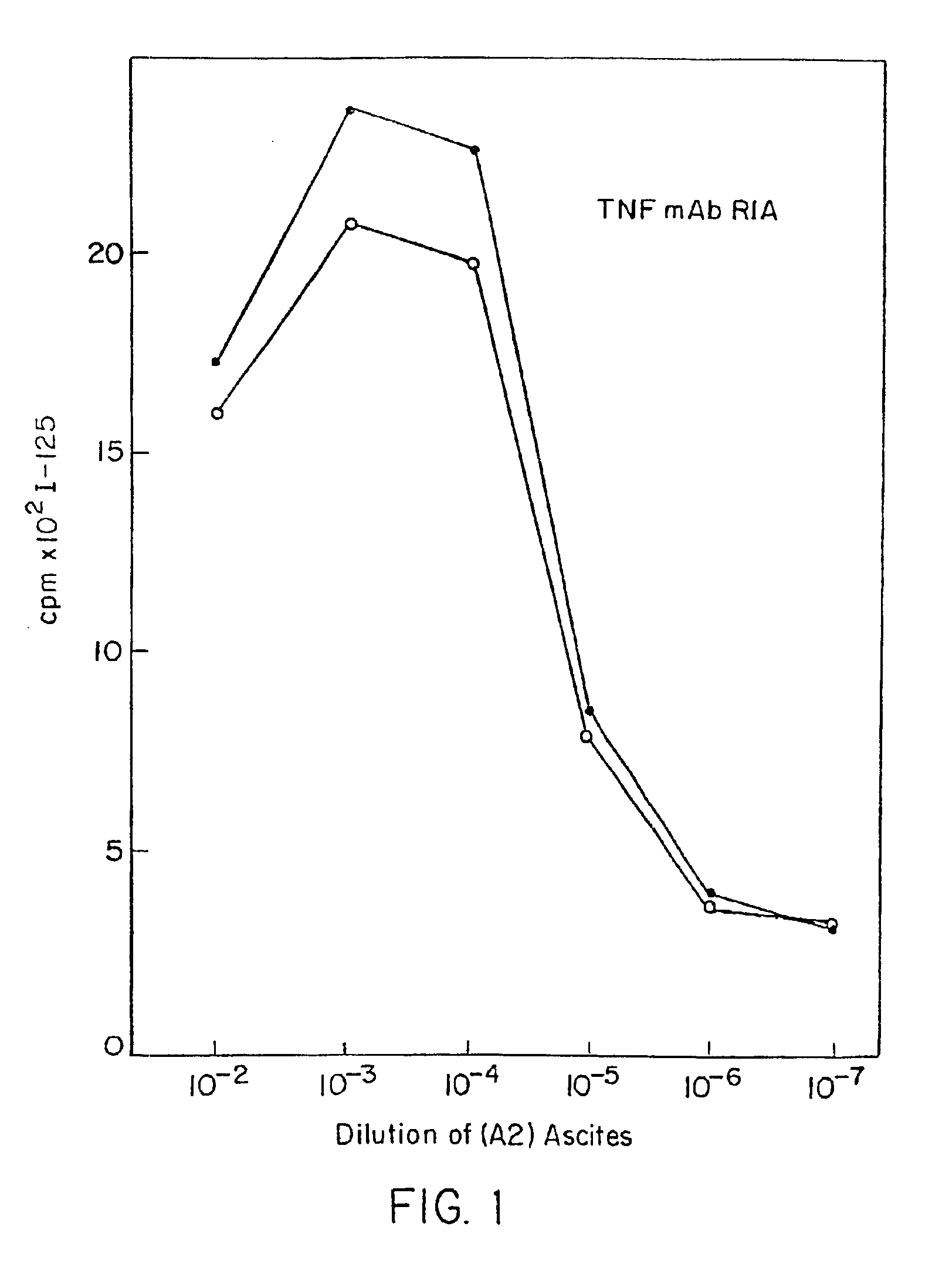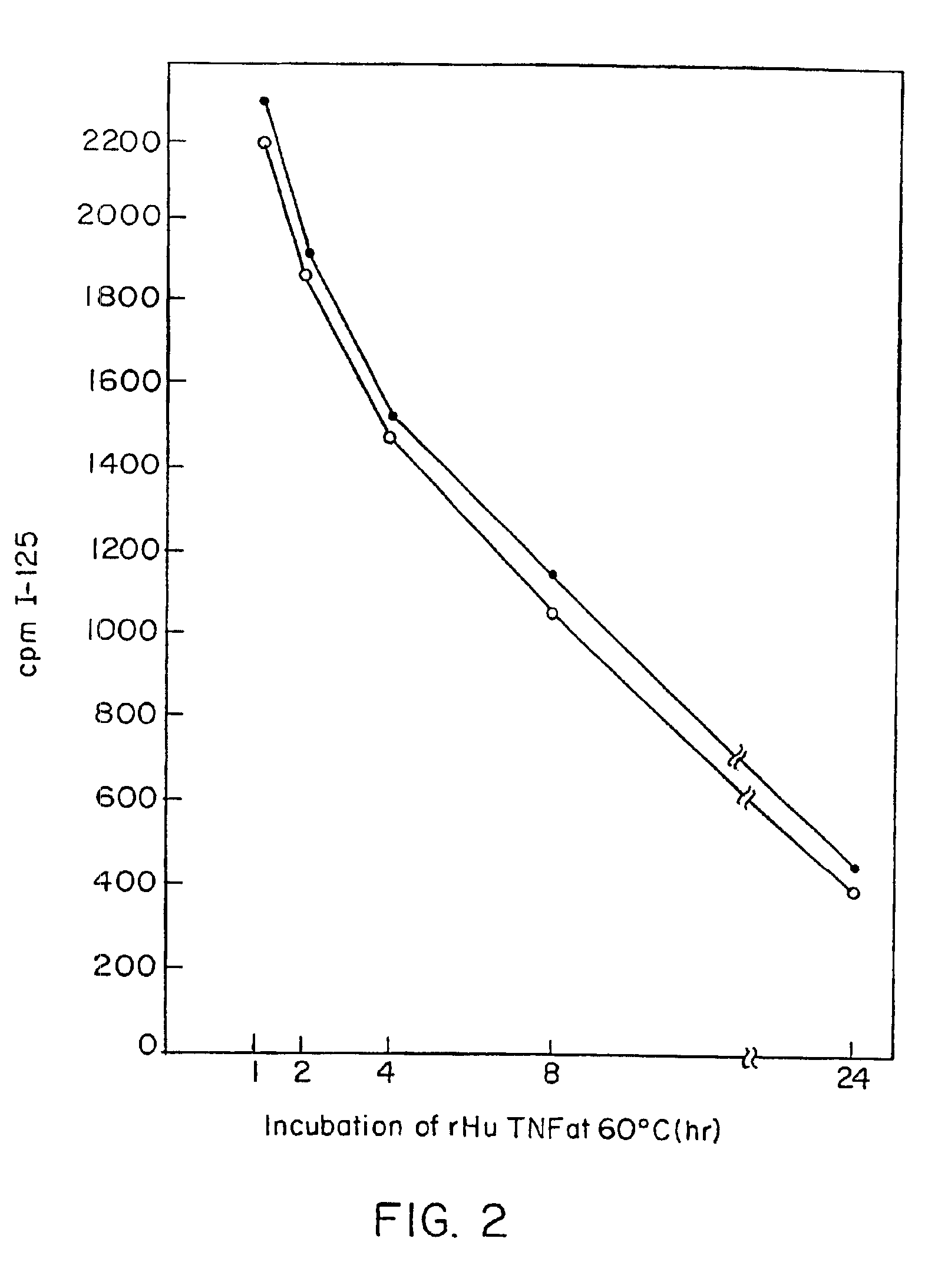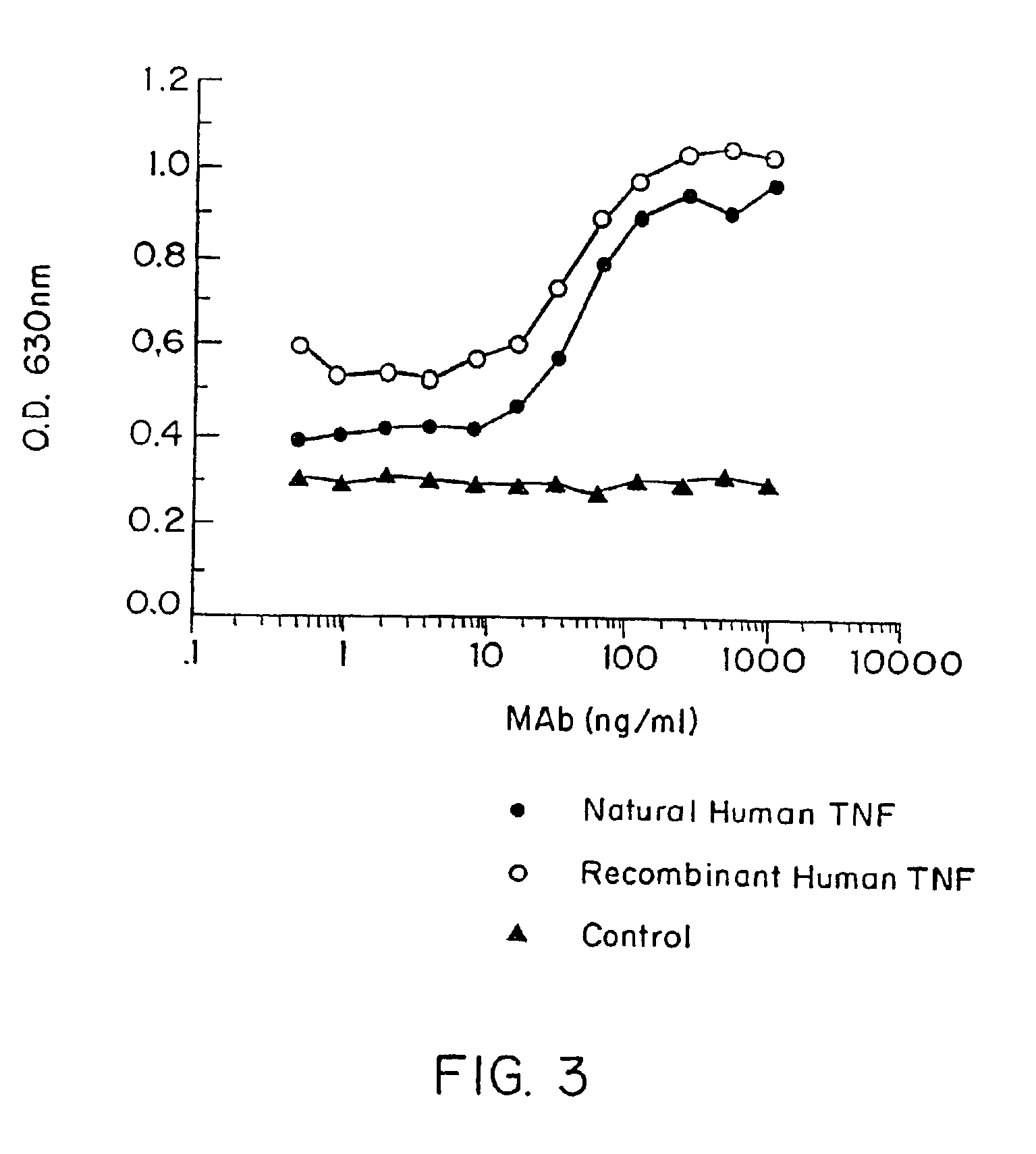Anti-idiotypic anti-TNF antibodies and related immunoassay methods
a technology of anti-tnf antibodies and immunoassays, which is applied in the field of immunoassays against human tumor necrosis factor alpha (htnf) antibodies, can solve the problems of limited human experience with anti-tnf murine mab therapy, decreased effectiveness of continued administration, and inability to provide a basis for producing tnf neutralizing antibodies that can be used in in vivo diagnostic or therapeutic purposes
- Summary
- Abstract
- Description
- Claims
- Application Information
AI Technical Summary
Benefits of technology
Problems solved by technology
Method used
Image
Examples
example i
Production a Mouse Anti-Human TNF mAb
[0292]To facilitate clinical study of TNF mAb a high-affinity potent inhibiting and / or neutralizing mouse anti-human TNF IgG1 mAb designated A2 was produced.
[0293]Female BALB / c mice, 10 weeks old, were obtained from the Jackson Laboratory (Bar Harbor, Me.). Forty μg of purified E. coli-derived recombinant human TNF (rhTNF) emulsified with an equal volume of complete Freund's adjuvant (obtained from Difco Laboratories) in 0.4 ml was injected subcutaneously and intraperitoneally (i.p.) into a mouse. One week later, an injection of 5 μg of rhTNF in incomplete Freund's adjuvant was given i.p. followed by four consecutive i.p. injections of 10 μg of TNF without adjuvant. Eight weeks after the last injection, the mouse was boosted i.p. with 10 μg of TNF.
[0294]Four days later, the mouse was sacrificed, the spleen was obtained and a spleen cell suspension was prepared. Spleen cells were fused with cells of the nonsecreting hybridoma, Sp2 / 0 (ATCC CRL1581)...
example ii
Characterization of an Anti-TNF Antibody of the Present Invention.
Radioimmunoassays
[0298]E. coli-derived rhTNF was diluted to 1 μg / ml in BCB buffer, pH 9.6, and 0.1 ml of the solution was added to each assay well. After incubation at 4° C. overnight, the wells were washed briefly with BCB, then sealed with 1% bovine incubated with 40 pg / ml of natural (GENZYME, Boston, Mass.) or recombinant (SUNTORY, Osaka, Japan) human TNFα with varying concentrations of mAb A2 in the presence of 20 μg / ml cycloheximide at 39° C. overnight. Controls included medium alone or medium+TNF in each well. Cell death was measured by staining with naphthol blue-black, and the results read spectrophotometrically at 630 nm. Absorbance at this wave length correlates with the number of live cells present.
[0299]It was found that A2 inhibited or neutralized the cytotoxic effect of both natural and rhTNF in a dose-dependent manner (FIG. 3).
[0300]In another experiment, the specificity of this inhibiting and / or neutra...
example iii
General Strategy for Cloning Antibody V and C Genes
[0304]The strategy for cloning the V regions for the H and L chain genes from the hybridoma A2, which secretes the anti-TNF antibody described above, was based upon the linkage in the genome between the V region and the corresponding J (joining) region for functionally rearranged (and expressed) Ig genes. J region DNA probes can be used to screen genomic libraries to isolate DNA linked to the J regions. Although DNA in the germline configuration (i.e., unrearranged) would also hybridize to J probes, this DNA would not be linked to a Ig V region sequence and can be identified by restriction enzyme analysis of the isolated clones.
[0305]The cloning utilized herein was to isolate V regions from rearranged H and L chain genes using JH and Jk probes. These clones were tested to see if their sequences were expressed in the A2 hybridoma by Northern analysis. Those clones that contained expressed sequence were cloned into expression vectors ...
PUM
| Property | Measurement | Unit |
|---|---|---|
| molecular weight | aaaaa | aaaaa |
| time | aaaaa | aaaaa |
| concentrations | aaaaa | aaaaa |
Abstract
Description
Claims
Application Information
 Login to View More
Login to View More - R&D
- Intellectual Property
- Life Sciences
- Materials
- Tech Scout
- Unparalleled Data Quality
- Higher Quality Content
- 60% Fewer Hallucinations
Browse by: Latest US Patents, China's latest patents, Technical Efficacy Thesaurus, Application Domain, Technology Topic, Popular Technical Reports.
© 2025 PatSnap. All rights reserved.Legal|Privacy policy|Modern Slavery Act Transparency Statement|Sitemap|About US| Contact US: help@patsnap.com



